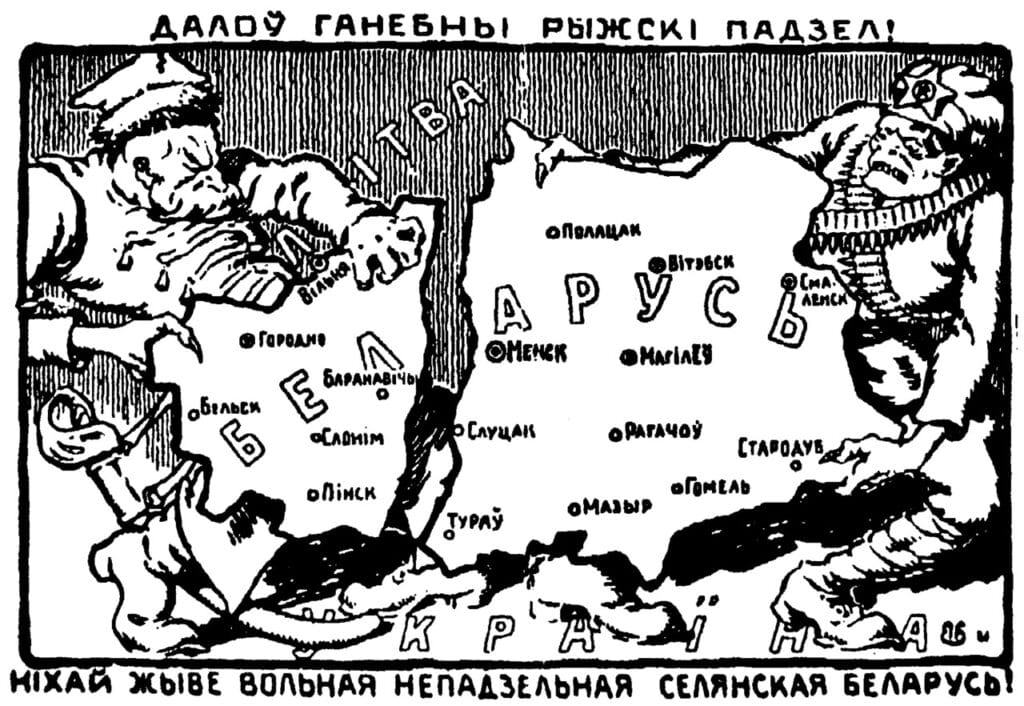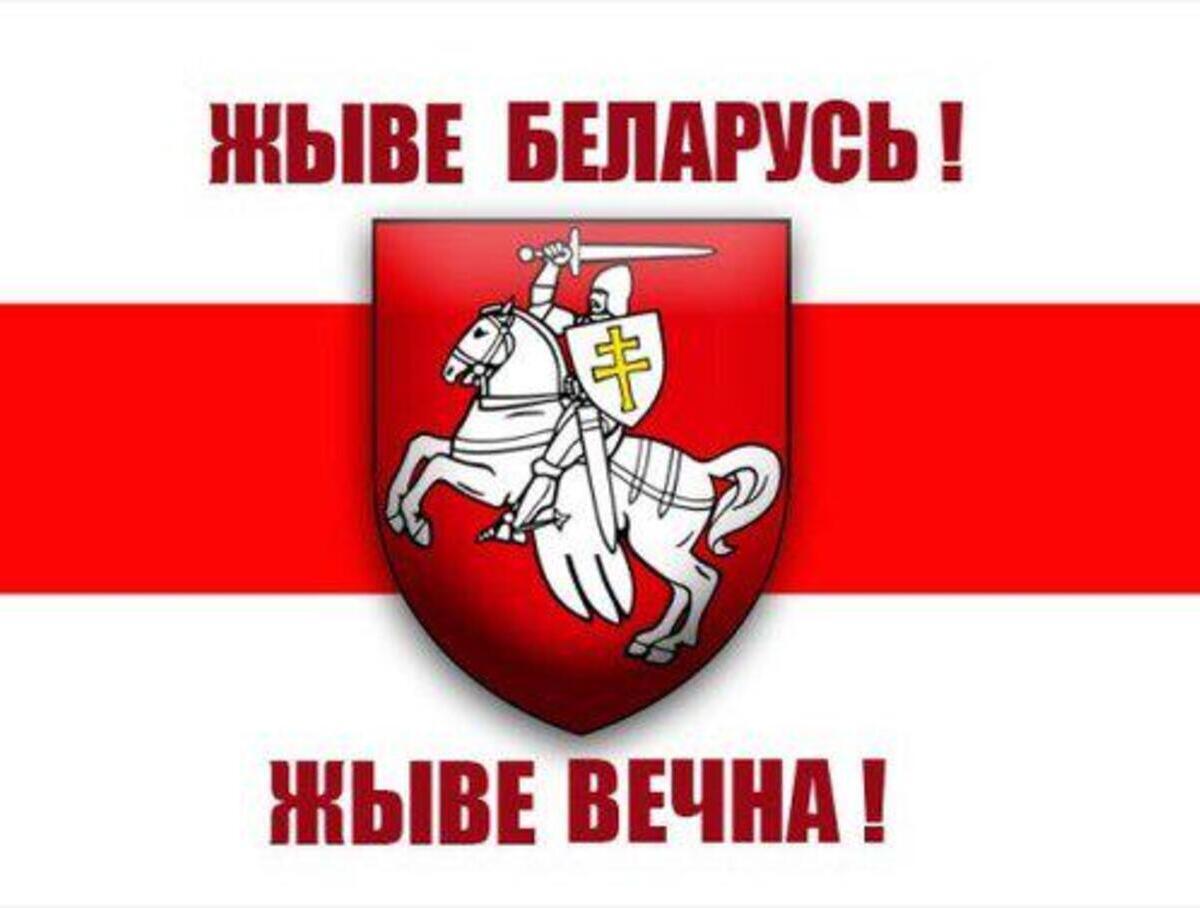In 2022, the Belarusian authorities included the slogan “Long Live Belarus!” to the list of Nazi symbols. Supporters of the ruling regime argue that the phrase was coined by collaborators during World War II. We decided to check if this is true.
In November 2022, the Ministry of Internal Affairs of Belarus added a list of Nazi symbols and Nazi organizations in the law “On preventing the rehabilitation of Nazism”, including in it the greeting “Long Live Belarus!”, popular among the opposition. The Ministry of Internal Affairs of Belarus calls it a “collaborationist salute” and explains that it “is a symbol of the 13th Belarusian police battalion under the SD and the 30th Grenadier (Infantry) Division of the Waffen-SS (Russian No. 2, aka Belarusian No. 1) on a par with the Nazi party salute “Heil Hitler” and represents accompanied by raising the right hand with a straightened with the palm of the hand the exclamation “Long live Belarus!” and the review “Long Live!” One of the initiators of the change in the law, pro-government historian and member of the House of Representatives of the Belarusian Parliament Igor Marzalyuk back in 2020 claimedthat the use of this greeting began only during the Nazi occupation.
The slogan “Long live Belarus!” became widespread at the beginning of the twentieth century. The most famous mention of this time is the words “Long live Belarus!” - poem by a Belarusian poet Yanka Kupala, whose name in modern Belarus is the National Academic Theatre, streets and parks.

Poem was written between 1905 and 1907. Later the words “Long live Belarus!” met with other poets - for example, Fyodor Chernyshevich in the eponymous poem 1912. The context was the same - the desire for national revival and sovereignty.
The newspaper “Nasha Niva”, which was from 1906 to 1920 the main printed publication published in the Belarusian language, wrote in 1912 that “from the chest of every conscious Belarusian this cry bursts out - “Long live Belarus!”.”
When in 1921, according to the conditions Riga Treaty The territory of Belarus was divided between Soviet Russia and Poland, many supporters of independence went abroad. The slogan “Long live Belarus!” for a long time became popular among the Belarusian emigration - his used at meetings in Prague, Paris and Vilnius.

In 1941, the territory of Belarus was occupied by German troops. The occupation administration encouraged the national movement, allowing the widespread use of the Belarusian language and symbols, including the white-red-white flag.
In 1943, with the permission of the General Commissioner of the Belorussia District, Wilhelm Kube was created The Union of Belarusian Youth is a paramilitary youth organization following the example of the Nazi Hitler Youth. The official symbols of the movement were the white-red-white flag and the slogan “Long Live Belarus!” The monthly magazine of the Union of Belarusian Youth was also called.

The phrase “Long live Belarus!” became the slogan of collaborationist military formations. Franz Kuschel, who was responsible during the occupation for the work of police battalions and volunteer divisions, in his memories wrote: “In [the village] Urechye, the entire 36th Belarusian police regiment was lined up in front of me. "Long live Belarus!" — this is how I started and ended my speeches, and the powerful “Long Live!” flew out of the chests of Belarusian police officers.” Kushel also mentions this greeting in the description of another episode, when the remains 30th SS Volunteer Infantry Division (1st Belarusian) surrendered on April 30, 1945 to the American military. At the same time, the greeting in the Belarusian volunteer units was not formalized in any way - in any case, the relevant “Verified” documents could not be found.
At the same time, the slogan “Long live Belarus!” Belarusian partisans also used it. For example, these words are in the “Partisan March” of the poet Pimen Panchenko, and precisely in the form that the authorities of modern Belarus consider collaborationist, with the answer “Long live!”

In the first post-Soviet years, the white-red-white flag became the state flag, and the slogan “Long Live Belarus!” sounded at official events. For example, until 2020 he was published above the name of “Narodnaya Gazeta”, the official printed publication of the Belarusian parliament. In addition, there is a video from 1995 in which the words “Long live Belarus!” Alexander Lukashenko, who a year earlier won the presidential election for the first time, applauds.
In the 2000s, “Long Live Belarus!” gradually became the slogan of anti-Lukashenko protests - for example, in 2006 in Minsk and in 2020 throughout the country, when the reason for street protests became falsification voting results in the election of the head of state. The words “Long live Belarus!” under Lukashenko they actually became illegal: for example, a resident of Gomel was brought to justice, who wrote this slogan on a snowman, or a mother with many children, shouted “Long live Belarus!” from the window. And at the end of 2022, the slogan was outlawed de jure when it was included in the list of Nazi symbols.
Thus, the history of the use of the slogan “Long Live Belarus!” similar to the case with the greeting "Glory to Ukraine!" “Long live Belarus!” was spoken and written by supporters of sovereignty and cultural revivalists at the beginning of the twentieth century, then it became popular among emigrants. And during the Second World War, it was also adopted by collaborators. However, as in the case of the words “Glory to Ukraine!”, this was a popular slogan that already existed at that time. In addition, during the war it was also used by Belarusian partisans. Therefore, the statement that this is primarily a Nazi salute is untrue.
Cover photo:
Not true
- Mirror. Long live Belarus! We tell you how the famous national slogan appeared and who used it.
- Is it true that the slogan “Glory to Ukraine!” was invented by the Banderaites?
If you find a spelling or grammatical error, please let us know by highlighting the error text and clicking Ctrl+Enter.






